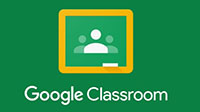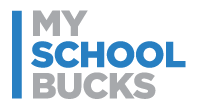TISD Dyslexia Program
TISD Dyslexia Program
- In accordance with 19 TAC §74.28(e), Tioga ISD has adopted an evidence-based reading program for students with dyslexia and related disorders. Tioga ISD currently uses Take Flight: A Comprehensive Intervention for Students with Dyslexia written by the staff of Luke Waites Center for Dyslexia and Learning Disorders at Scottish Rite for Children. Take Flight incorporates all the components of instruction and instructional approaches described below.
•Phonological awareness
• Sound-symbol association
• Syllabication
• Orthography
• Morphology
• Syntax
• Reading Comprehension
• Reading Fluency
Tioga ISD’s dyslexia instruction provides evidence-based, multisensory structured literacy instruction for students with dyslexia. A standard protocol dyslexia instructional program must be explicit, systematic, and intentional in its approach. This instruction is designed for all students with dyslexia and will take place in a small group setting. Standard protocol dyslexia instruction must be—
• evidence-based and effective for students with dyslexia;
• taught by an appropriately trained instructor; and
• implemented with fidelity.
The delivery of the Tioga ISD dyslexia program is consistent with research-based practices including—
• Simultaneous, multisensory (VAKT)—“Teaching is done using all learning pathways in the brain (visual, auditory, kinesthetic, tactile) simultaneously in order to enhance memory and learning” (Birsh, 2018, p. 26).
• Systematic and cumulative— “The sequence will begin with the easiest concepts and most basic elements and progress methodically to more difficult material. Each step must also be based on [elements] already learned. Concepts taught must be systematically reviewed to strengthen memory” (Birsh, 2018, p. 26).
• Explicit instruction—“Explicit instruction is explained and demonstrated by the teacher one language and print concept at a time, rather than left to discovery through incidental encounters with information. Poor readers do not learn that print represents speech simply from exposure to books or print” (Moats & Dakin, 2008, p. 58). Explicit Instruction is “an approach that involves direct instruction: The teacher demonstrates the task and provides guided practice with immediate corrective feedback before the student attempts the task independently” (Mather & Wendling, 2012, p. 326).
• Diagnostic teaching to automaticity—“The teacher must be adept at prescriptive or individualized teaching. The teaching plan is based on careful and [continual] assessment of the individual’s needs. The content presented must be mastered to the degree of automaticity” (Birsh, 2018, p. 27). “This teacher knowledge is essential for guiding the content and emphasis of instruction for the individual student”(Moats & Dakin, 2008, p. 58). “When a reading skill becomes automatic (direct access without conscious awareness), it is performed quickly in an efficient manner” (Berninger & Wolf, 2009, p. 70).
• Synthetic instruction—“Synthetic instruction presents the parts of the language and then teaches how the parts work together to form a whole” (Birsh, 2018, p. 27).
• Analytic instruction—“Analytic instruction presents the whole and teaches how this can be broken into its component parts” (Birsh, 2018, p. 27).










